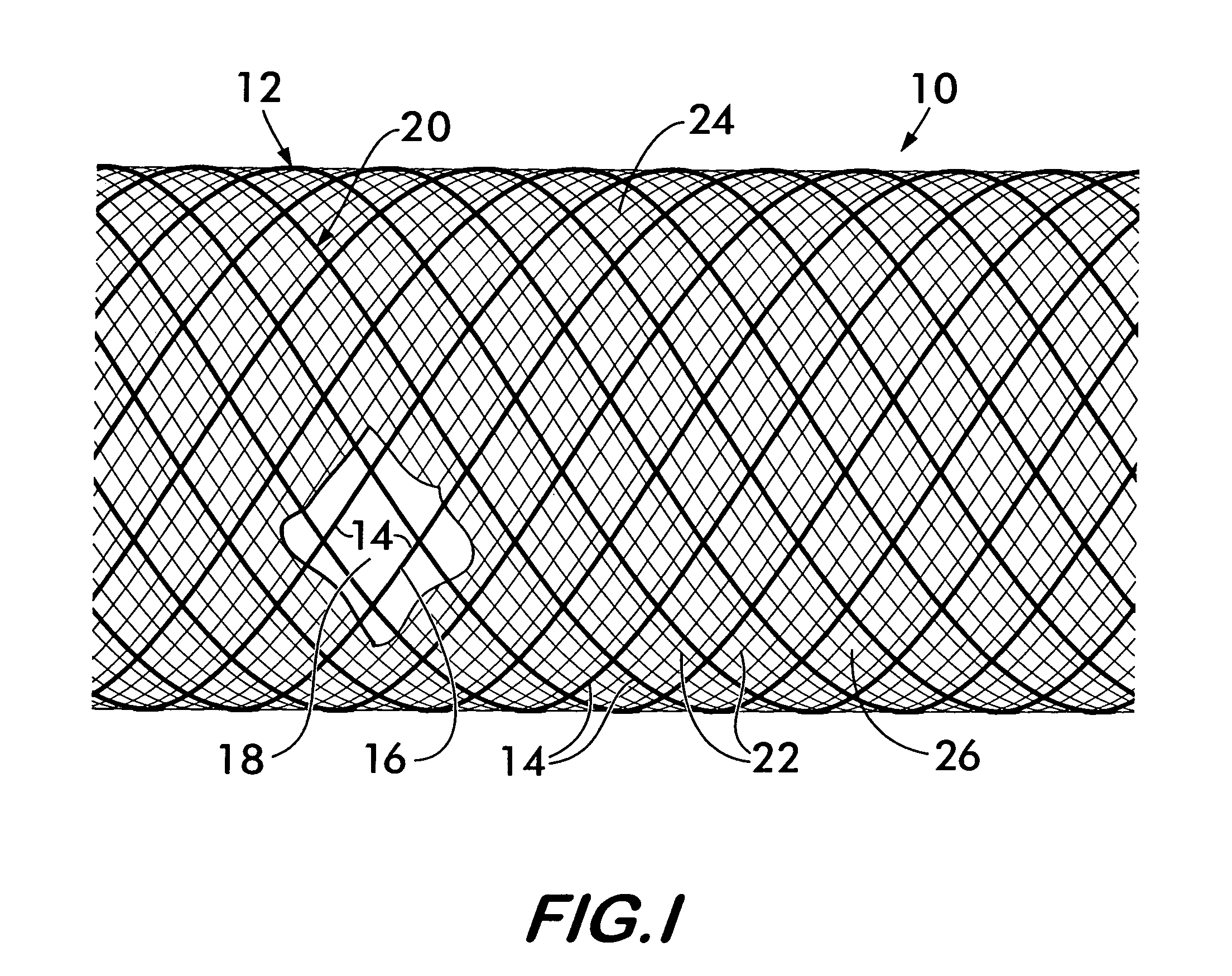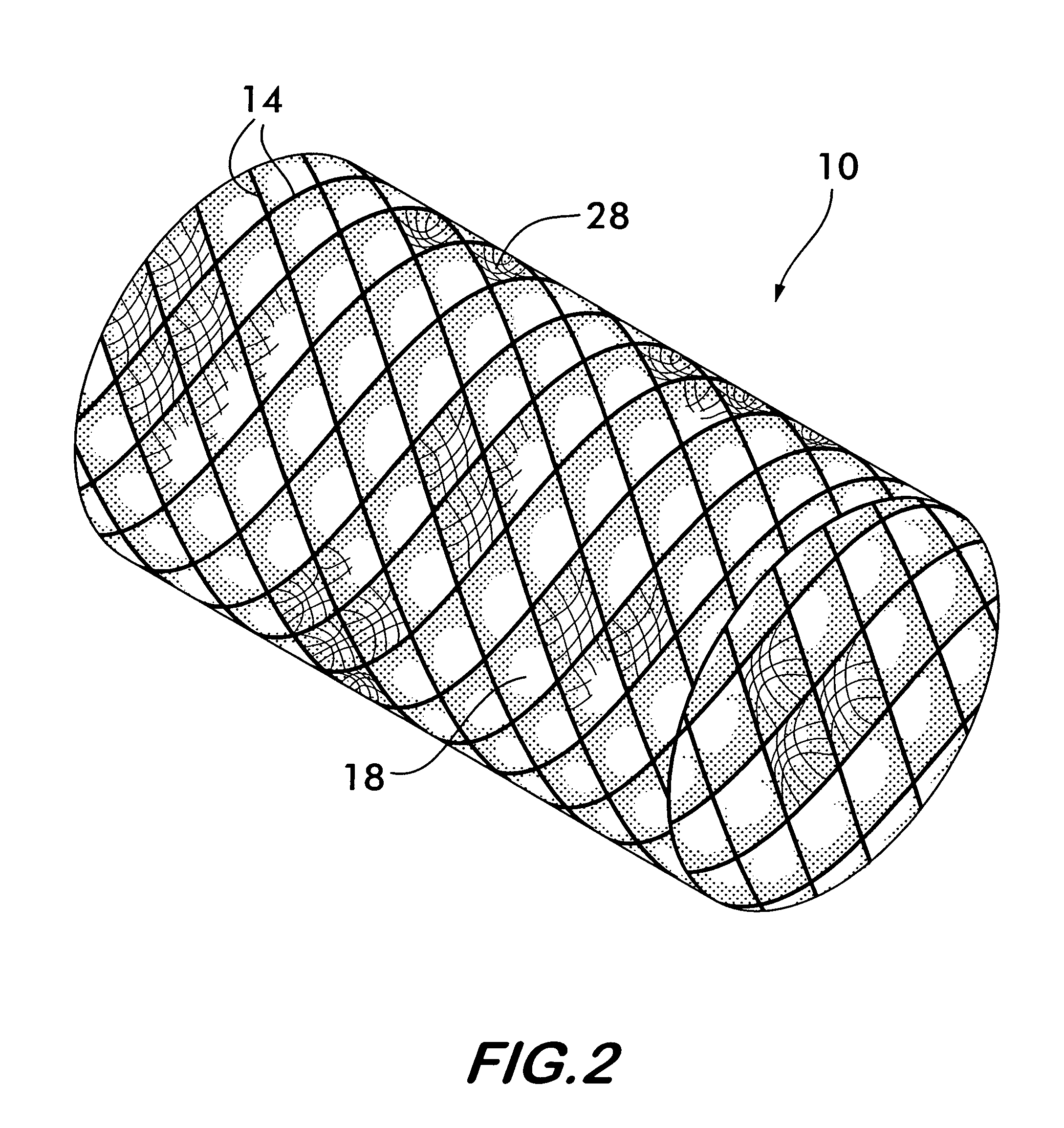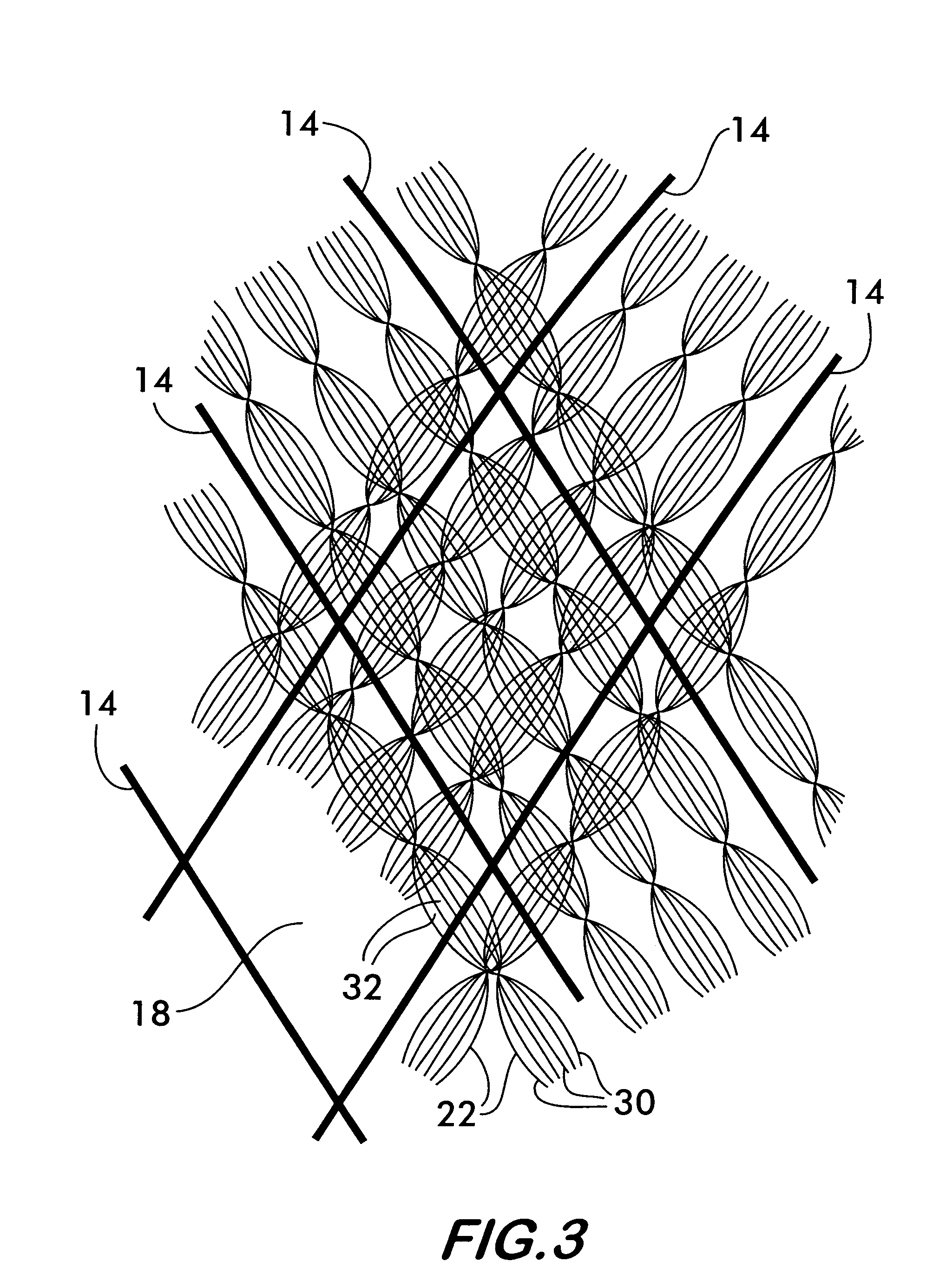Supported lattice for cell cultivation
a cell cultivation and supported lattice technology, applied in the field of supported lattice, can solve the problems of inacceptable synthetic grafts of this size, difficult to form a vessel suitable for bypass operation, and significant trauma experienced by patients
- Summary
- Abstract
- Description
- Claims
- Application Information
AI Technical Summary
Benefits of technology
Problems solved by technology
Method used
Image
Examples
Embodiment Construction
[0029]Examples of various presently preferred embodiments of the supported lattice for cultivation of living cells are provided below in the context of various surgical procedures in which they may be used. It is to be understood that the various examples of the invention described below are for illustration only and are in no way intended to limit the invention or its uses.
Tubular Supported Lattice for Coronary Bypass Graft
[0030]FIG. 1 shows a tubular supported lattice 10 comprising a support substrate 12 formed of a plurality of resilient filamentary members 14 interlaced together. The resilient filamentary members 14 are interlaced to form a relatively coarse mesh 16 defined by relatively large interstices 18 formed between the resilient filamentary members 14. Interstices 18 are considered large relative to the living cells to be cultivated, such that while cells may grow along and around the resilient filamentary members they will not tend to bridge the interstices and grow acr...
PUM
| Property | Measurement | Unit |
|---|---|---|
| size | aaaaa | aaaaa |
| size | aaaaa | aaaaa |
| size | aaaaa | aaaaa |
Abstract
Description
Claims
Application Information
 Login to View More
Login to View More - R&D
- Intellectual Property
- Life Sciences
- Materials
- Tech Scout
- Unparalleled Data Quality
- Higher Quality Content
- 60% Fewer Hallucinations
Browse by: Latest US Patents, China's latest patents, Technical Efficacy Thesaurus, Application Domain, Technology Topic, Popular Technical Reports.
© 2025 PatSnap. All rights reserved.Legal|Privacy policy|Modern Slavery Act Transparency Statement|Sitemap|About US| Contact US: help@patsnap.com



